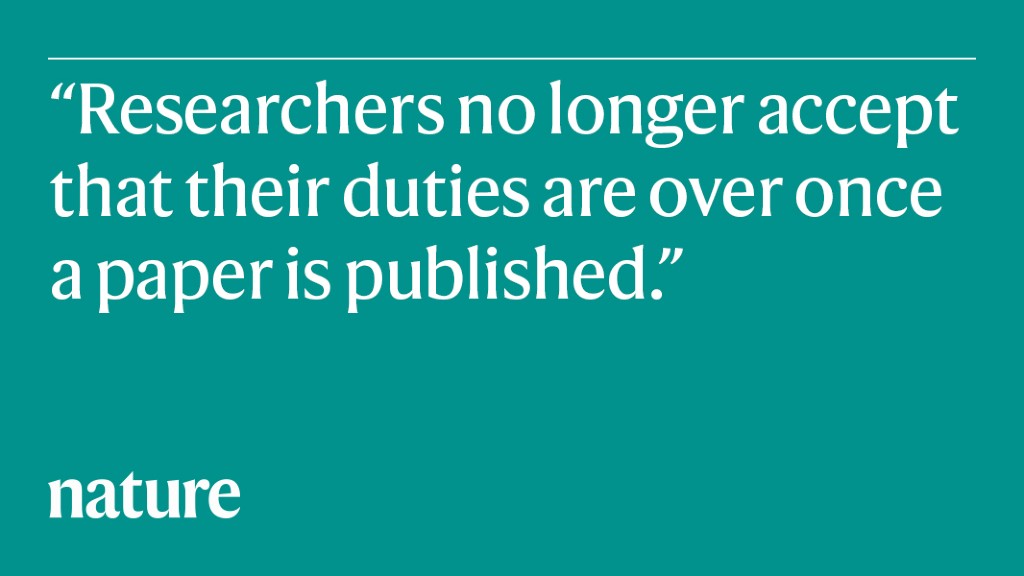This digital hygiene routine protects your scholarship
[ad_1]
A few years ago, one of my mentors was surprised to find out he was sharing a name with a porn star. He wrote to Google to ask that inquiries not include racy images under his name. Another adviser had learned that a former junior colleague had added his name to a conference contribution without his knowledge, presumably to add prestige, and my adviser was charged with undisclosed conflicts of interest.
Such stories are prevalent in the academic world – and they are as likely to be the result of misconduct as they are confusion. Scholars’ names, work, or both are used by crooked persons or institutions to deceive others. The extent of the problem worries me. I shudder when I imagine my university‘s academic integrity officer coming to me with a pile of flawed papers – never seen before – with my name.
Funders, publishers, and institutions all have a responsibility to develop guidelines that prevent abuse by science. But individual scholars also have a certain power – and a duty – to do so. I propose a “hygiene routine†that scientists should repeat regularly – similar to a haircut or a dental exam. The threat of exposure and wider community awareness of abuse could undermine established predatory practices and nip new ones in the bud.
I do my own scientific check-up about every two months. These tasks not only protect my own reputation, but also prevent abuse in general. If researchers everywhere adopt such a habit, we can prevent abuse from rampant.
As part of my digital hygiene routine, I look up my own name and affiliation on an online search engine to make sure I’m not on robbery magazine editorial offices or conference boards that I’ve never heard of. I am checking to see if I have received involuntary confirmation, a form of abuse of authorship that “acknowledges” your support and contribution to a paper without your knowledge and suggests that the work represents your views. In the event of anomalies, you can contact the publisher or the corresponding author of the study by involving your own university management or representatives for scientific integrity.
Another part is querying your researcher profile in bibliographic databases, including Dimensions and Google Scholar. Better yet, subscribe to notifications and contact Dimensions, Scopus, or Web of Science if your work is attributed to another scientist by your name, or vice versa. Use citation warnings to correct misrepresentations of your results.
This monitoring also helps you find opportunities. Get in touch with researchers you’ve worked with. Telling your co-authors who cited your work (and why) can strengthen bonds and reinvigorate idle collaboration. When members of my team saw researchers using software we had written, we updated it to look for problematic papers and improved the search for “tortured phrases” – paraphrased by software to hide plagiarism – like “p- appreciation” (instead of “P.-Value’).
The review of activities also requires care. When reviewing a paper, look for techniques to bypass plagiarism detection and alert the editors. In the Related Work section, look for inserted paragraphs that have been computationally modified to bypass plagiarism detectors and mimick an original synthesis of ideas. Reject submissions with such content.
Part of your routine should be to highlight your good faith volunteer efforts during the review. How many reviewers have read a published article and wondered if the writers even saw their hours of reviews? Sometimes not: Magazine editors may not know how to handle reviews or they may be pressured to publish articles quickly.
To make your efforts visible, add the relevant parts of your evaluation report to PubPeer. Post a comment (signed or not) indicating that you voiced this criticism but never saw the authors’ rebuttal. This will show that the journal’s editors either did not make valuable comments or did not address them. Authors (or other readers) can then provide a point-by-point answer in public if they wish. Researchers may find ways to incorporate these comments into meta-analyzes, or manuscript editors could use them to get a feel for how articles published in their journals are perceived.
As a scientist, become aware and find out how fraudsters deceive editors, reviewers, and writers. Scroll through PubPeer and Retraction Watch. Stay vigilant for predatory publishers and their flattering plans. If you discover a problem in a publication, such as incorrect formulas, fabricated data, or manipulated images, post a comment on PubPeer to notify the authors so they can clarify the situation. This will help reviewers and writers identify the problems that routinely arise with particular journals. Praise counts too. If you find that any approach beyond the uses described could work, say so.
These reviews are not a panacea for predatory publishers, fraudulent practices, ignored reviews, or simple mistakes. Think of it like cleaning a beach: more rubbish is washed in, but the more it is removed, the cleaner the beach is and the more pollution is discouraged.
Researchers no longer accept that once a paper is published, their duties are over. With everyone monitoring their corpus, a scourge of abuse will be stifled – and productive collaborations will take their place.
Competing interests
The author does not declare any competing interests.
[ad_2]

